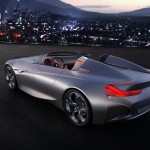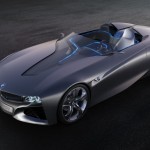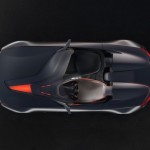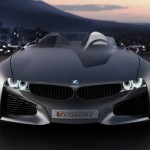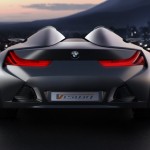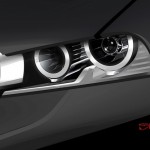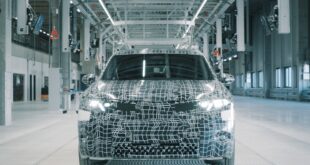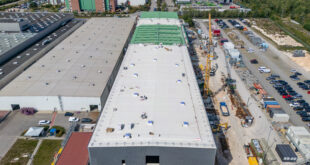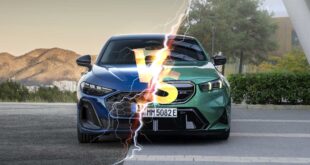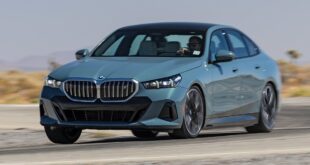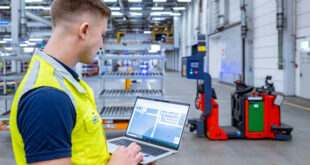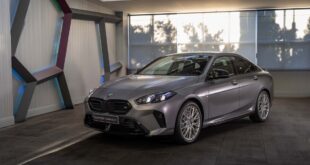 BMW has integrated three fictitious stories to show the benefits of the technical advancements of the BMW Vision Connected Drive Concept. It highlights the interaction between driver, vehicle and environment. These are the technologies that BMW has been developing in Munich, that will soon make way to other future BMW vehicles. Rumor has it that the BMW Vision ConnectedDrive concept is highly being considered for production.
BMW has integrated three fictitious stories to show the benefits of the technical advancements of the BMW Vision Connected Drive Concept. It highlights the interaction between driver, vehicle and environment. These are the technologies that BMW has been developing in Munich, that will soon make way to other future BMW vehicles. Rumor has it that the BMW Vision ConnectedDrive concept is highly being considered for production.
Comfort Scenario – the vehicle is your own personal concierge.
In the first BMW Vision ConnectedDrive scenario, you are alone in the automobile. After you get in, your smartphone automatically connects to the vehicle, the vehicle-specific apps are activated and can be accessed from the main vehicle menu on the freely programmable instrument cluster. The vehicle then immediately synchronises with your calendar and learns that you have a lunch appointment with a colleague in town very shortly. It passes the address of the restaurant to the navigation system and searches for a s suitable route in order to arrive at the appointment on time. Up-to-the-minute traffic information is a component of the route calculation, as well as preset preferences, which for instance might get you there particularly quickly or particularly efficiently. In addition, parking options are considered as well as alternative methods of getting there by public transport.
On the way to the restaurant, you receive a text message from your colleague. The Head-Up Display makes you aware of the arrival of new text message, you can read the message itself on the instrument cluster, or simply have it read out loud to you via the text-to-speech feature. Your colleague writes that he is already at your agreed meeting point but that the restaurant is much too crowded. He asks you to suggest an alternative. You then activate the BMW Assist Information Service. Your personal operator in the BMW ConnectedDrive Call Centre looks for an equivalent option nearby and, once you have agreed to his or her suggestion, he or she makes a reservation for you. This Concierge Service also transmits the new address information to your navigation system, you confirm the new destination in your navigation system and the guidance system swings into action. Afterwards, you activate the vehicle’s text message feature and using speech-to-text, dictate a message to your colleague with the address of the new restaurant.
The alternative restaurant is located on the 25th floor of a high-rise building that has its own parking garage. When you arrive, the vehicle indicates the nearest free parking spot and directs you to it using augmented reality on the Head-Up Display. Before you leave the car and your smart phone disconnects, the vehicle transmits a MicroMap to your mobile, detailing the last few meters through the building to the restaurant. Your mobile then takes over the guidance function. After you have got out of the car, the automobile drives itself automatically into the parking spot.
Infotainment Scenario: The world of Infotainment in the vehicle.
In the second BMW Vision ConnectedDrive scenario, you experience what BMW ConnectedDrive will be delivering in terms of Infotainment in the future. At the beginning of this scenario, you are the passenger. While driving through a city where you have never been before, you activate the Emotional Browser via the touch sensitive area on the instrument panel. The Passenger Information Display in the instrument panel comes to life. You immediately receive information, formatted very much like magazine articles, on points of interest such as cafés, museums or sights of interest in the vicinity. The Emotional Browser gives you the ability to easily filter the information to meet your requirements, to organise it and change the layout of the display.
You are driving past a café renowned for its good music. The Emotional Browser shows that a playlist of selected titles played in the café is available as an audio stream. You view the titles and decide that you would like to listen to the music. You send the playlist to the driver with a wave of your hand. It is displayed on the instrument cluster while you are waiting at the next red light. The driver also likes the playlist and confirms that he also would like to listen to the music by using the multifunctional steering wheel or the iDrive Controller. Streaming commences and the music plays. Simultaneously, the cover of the playlist appears in the menu bar under Entertainment/Multimedia and is displayed while the music is playing.
With good music playing in the background, you decide to find out a little more about the buildings around you and activate the “architecture†filter. The Browser now exclusively shows you relevant information on the architectural highlights, both near and far. While you are being provided with detailed information on your display, the Head-Up Display discreetly points out features of architectural interest on the buildings that you are passing to the driver.
One building interests you in particular so you retrieve detailed information about it. It is a museum that is currently hosting an exhibition that appeals to you. A gesture is all it takes to pass more detailed information on the exhibition to the driver’s instrument cluster and to suggest that the museum become the new destination. The driver can either briefly take a closer look or accept the address straightaway as the new destination for the navigation system. Once the new destination has been confirmed, the vehicle informs the driver of the distance to the building, journey duration and makes suggestions on alternative routing. You purchase tickets to the exhibition online during the journey. As soon as the destination comes into view, the driver is provided with a highlighted augmented reality view of it, helping you to quickly complete the last stage of your journey.
Location-based information and intelligent filter functionality.
The BMW Vision ConnectedDrive Infotainment scene is based primarily on location-based information. Only information on the surroundings falling within a certain, predefined radius is shown. The filter features allow the information available to be filtered by content and to be displayed as a specific selection and even personalised. These filter settings can be made in the comfort of your own home or can be carried out spontaneously in the vehicle. Individually tailored information is thus obtained from raw data. The filters work semantically, ordering information not just by keyword but also by the meanings associated with that keyword. In addition to the “architecture†filter, filters such as “leisure activities†or “events†display cinema schedules, concerts and exhibitions next to one another – according to preferences that have been set up or learned. The predefined filters are not static. They can be adapted to suit individual preferences or can be set up from scratch. Location-based services enable the information available to be used to create a digital
tour of the city or to book a ticket, complete with the appropriate entry in the digital calendar.Safety Scenario: Looking ahead, staying safe.
In the last scenario we find ourselves back in town. Together with your passenger, you are driving along busy streets. The navigation system is activated. Via the three-dimensional Head-Up Display, you have all the information relevant to the journey such as speed, fuel consumption and navigational details directly in your field of view. Thanks to the augmented reality feature, the navigational details appear to be on the street itself and show you the way forward. In addition, the freely programmable instrument cluster displays a two-dimensional map of your surroundings, with your route highlighted upon it. Your passenger is watching a film on the Passenger Information Display in front of him. All the while, the sensory system constantly scans the space around the vehicle and along the chosen route.
Caution! Several sets of traffic lights on your route have just failed. The vehicle immediately projects a warning directly into your field of view on the Head-Up Display. Simultaneously, the instrument cluster provides you with a map of the affected area, showing in detail precisely which traffic lights along your route are out of operation. The warning also stops the film playing on the passenger’s display so that nothing will distract you from the hazard ahead. In all the situations in which BMW ConnectedDrive issues a warning, the fundamental principle is that warnings have priority over any other information. This gives you the best possible opportunity to grasp the situation, evaluate it and react appropriately. After the initial urgent warning, the warning icon moves off to the side, reminding you to pay greater attention than usual while continuing your journey. The film resumes where it stopped.
Making the invisible visible – sensors that can see around corners.
Just before the road junction with the first set of failed traffic lights, a new warning appears: danger of collision! Even before the road junction comes into view, your vehicle has exchanged information with other road users on the route ahead and has recognised a potentially dangerous situation. A car is approaching the road junction from the left at full speed even though it does not have right of way. If both vehicles maintain their present courses and speeds, a collision is likely. Your vehicle immediately makes you aware of the probable collision on the Head-Up Display and highlights the approaching car on a map on the instrument cluster. Again, the film on the passenger’s display is stopped. As soon as the other car comes into view, it will be highlighted by an augmented reality outline. This gives you the opportunity to brake in time, let the other vehicle pass and to avoid a possible accident.
Further along the route, suddenly a vehicle unexpectedly emerges from a parking spot on your right. The sensory system immediately registers this and shows the emerging vehicle as a hazard in the Head-Up Display. The brakes are automatically applied, reducing your speed, and the minor jolt prompts you to deal with the situation yourself and to either continue braking or to take evasive action. Since the peripheral scan has shown that avoiding action will not be dangerous, the vehicle simultaneously makes an avoidance suggestion on both displays in the form of an arrow positioned over the lanes in the road. Displaying the options available in augmented reality allows the driver to quickly grasp the situation so that he can react intuitively, promptly and appropriately.
 BMW.SG | BMW Singapore Owners Community The Ultimate BMW Community – Established Since 2001
BMW.SG | BMW Singapore Owners Community The Ultimate BMW Community – Established Since 2001
